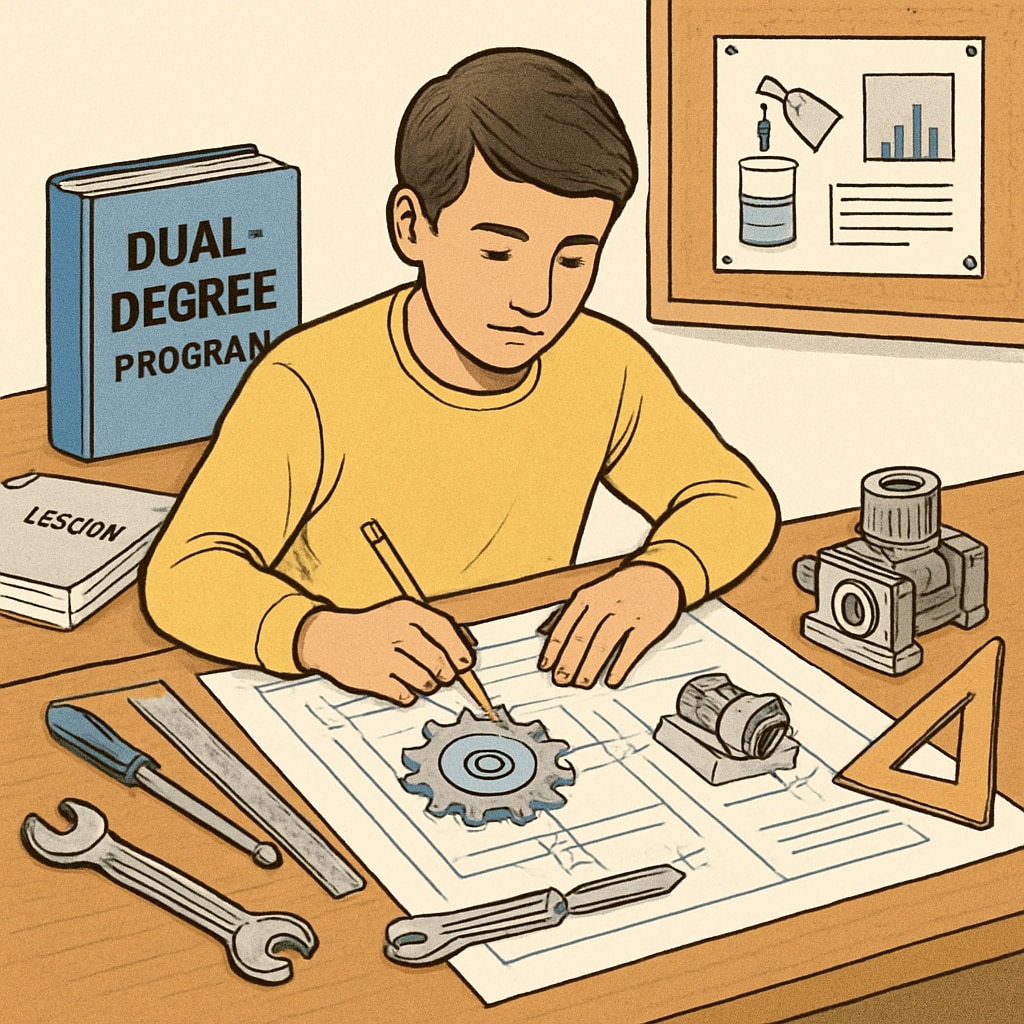Combining an education degree with an engineering degree may seem like an ambitious pursuit, but this dual-degree path is becoming increasingly relevant. The integration of these two fields allows students to bridge the gap between technical expertise and teaching methodologies, preparing them for unique roles in STEM (Science, Technology, Engineering, and Mathematics) education and beyond. This article delves into the feasibility of pursuing education and engineering dual degrees, explores the advantages and challenges, and highlights institutions that offer such programs.

Why Combine Education and Engineering Degrees?
Demand for STEM education professionals has surged in recent years, with schools and organizations emphasizing the importance of technical literacy. By pursuing dual degrees in education and engineering, students can gain both the technical knowledge required to inspire future engineers and the pedagogical skills necessary to effectively teach complex concepts.
For example, someone with expertise in mechanical engineering and a solid foundation in education theory can design innovative curricula, mentor aspiring engineers, or even lead STEM outreach programs. This combination opens doors to careers that are not limited to traditional engineering roles but extend into academia, educational content creation, and public policy development.
The Feasibility of Pursuing Dual Degrees
Although demanding, earning dual degrees in education and engineering is achievable with proper planning and dedication. Most universities offering such programs allow students to share elective credits between disciplines, reducing the total time spent in school. On average, students may complete both degrees in five to six years, depending on the institution and program structure.
However, balancing the coursework is no small feat. Engineering programs often require rigorous technical training, while education degrees emphasize research, communication, and classroom practice. Universities that support interdisciplinary studies usually offer structured dual-degree plans to help manage these challenges.
Key Considerations:
- Program Flexibility: Look for universities that allow credit-sharing between disciplines.
- Time Management: Learn to prioritize tasks and maintain a balanced schedule.
- Internship Opportunities: Seek programs that integrate hands-on experience in both fields.
Notable Universities Offering Dual-Degree Programs
While not all institutions provide structured dual-degree programs, some stand out for their focus on interdisciplinary education. Here are a few examples:
- Stanford University: Stanford offers flexible pathways for students interested in combining engineering with education, including opportunities to design custom curricula.
- University of Michigan: Known for its robust engineering and education departments, Michigan provides options for dual-degree students to collaborate on research projects.
- MIT: Through initiatives like the MIT Teaching Systems Lab, students can explore how engineering innovations impact education.
For more information on these programs, consider exploring resources like the Engineering Education page on Wikipedia or the Education section on Britannica.
Challenges and How to Overcome Them
While the benefits of dual degrees are abundant, students should also prepare for the challenges. Time constraints, heavy workloads, and the need to balance two distinct academic cultures can be overwhelming. Therefore, strong time management and a clear vision of career goals are essential.
Additionally, financial considerations play a significant role. Dual-degree programs often mean extended tuition costs. Scholarships, grants, and work-study programs can help alleviate this burden, allowing students to focus on their studies.

Conclusion: A Path for the Future
Pursuing education and engineering dual degrees is undoubtedly challenging, but the rewards are equally significant. Students who succeed in this path are well-equipped to become leaders in STEM education, curriculum innovation, and interdisciplinary research. As the world increasingly values cross-disciplinary expertise, these graduates will find themselves in high demand.
Whether your goal is to inspire the next generation of engineers or to create cutting-edge educational tools, a dual degree in education and engineering could be your gateway to a fulfilling and impactful career.
Readability guidance: This article uses short paragraphs, clear transitions, and lists to enhance readability. Technical terms are explained where necessary, and external links provide additional resources for deeper exploration.


